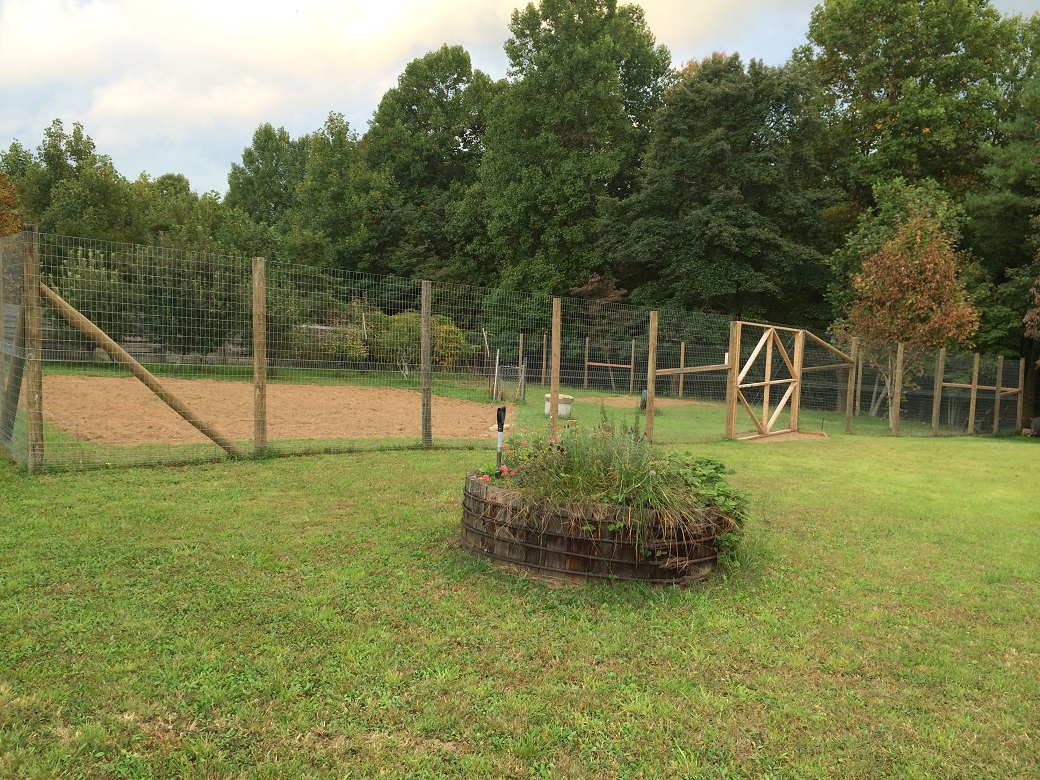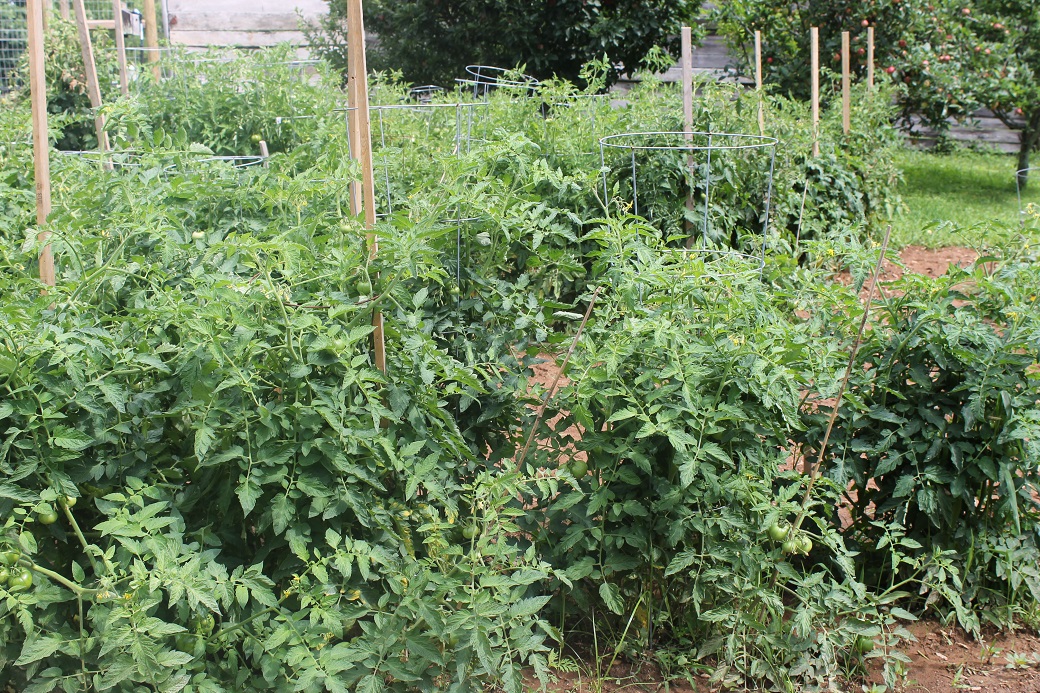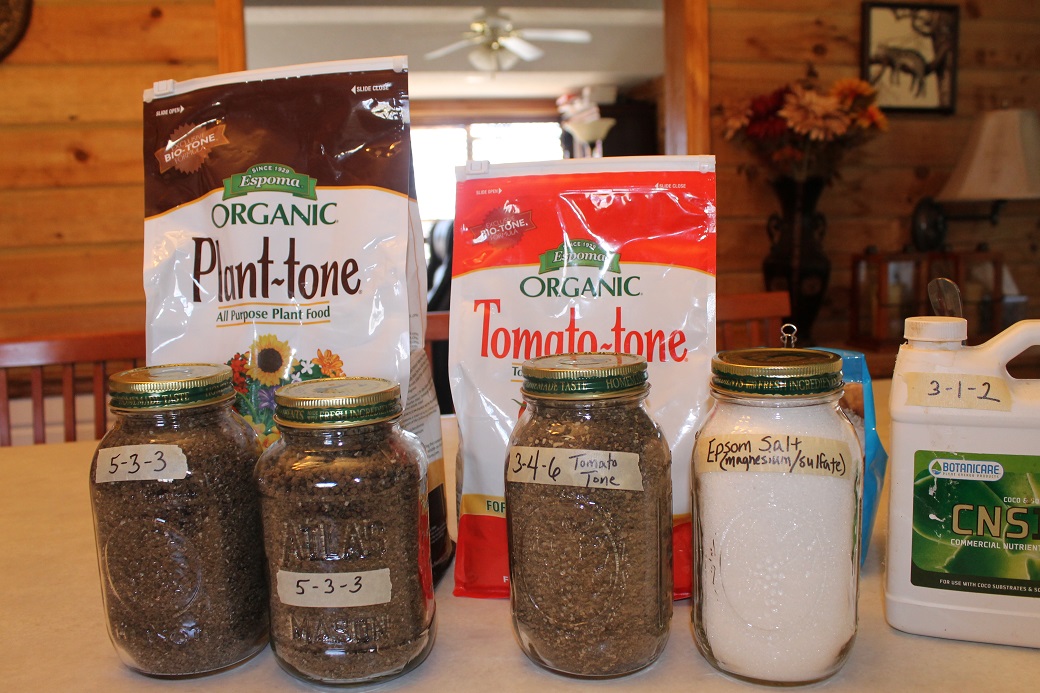Often we focus on what animals such as cows or chickens were fed prior to becoming our dinner meat or producing milk and eggs. But how often do we question what plants were fed before we consumed them? For those of us growing our own produce or acquiring locally grown food, it is relevant to know what the plants have eaten. What should I be feeding my food?
I am approaching this with the same question I ask when supplying all our needs. What are the healthy answers and how can we provide and make it ourselves? Not surprising to me at this point, my answers came after sifting through many conversations and articles on the web which, as usual, firmly repeat opinions as statements of fact both from one side of the pro-chemical GMO side versus the organic and heirloom foodies on the other. It requires invoking Cognitive Dissonance Rule #4: believe nothing but consider everything.
For those like me who have close to zero training and knowledge about growing plants, especially under the pressure of attempting to regularly supplement the family’s food supply, allow me to share the beginnings of my education in shedding my brown thumb. When filtering through information on the web and in books, it is easy to become intimidated by the complex explanations describing fertilizers, compost and soil amendments. Scaling it back to my level of comfort, here are the basics.
I thought all that was needed to grow food were sunshine, water and dirt with good drainage. It turns out there are three other vital factors. The first is the NPK available to the plants. NPK are the symbols for Nitrogen-Phosphorus-Potassium. The second is other trace elements which plants need, much the same way humans need a variety of vitamins and minerals to thrive. The third is considering the pH level of the soil and understanding what the pH needs are for various plants.
If we are fortunate, we will be able to have access to affordable organic plant food and soil tests. We can then test the acidity (pH levels) of the garden dirt and adjust it with a few substances we have on hand. It will be simple to meet the nutritional requirements of the plants as well. Sounds simple, yes?
But the very reason I went overboard, and Cog so graciously humored me in spirit and hard labor to erect a 20 year fence around the quarter acre garden and orchard, is because we are banking on the probability of some interruption of services in the foreseeable future. Whether it is shortages at the grocery stores or ridiculous inflation, the solution is to have the knowledge and ability to carry on. This is obviously vital when it comes to growing our own food and being able to feed our food along the way.
 The guys at the farm store chuckled last year at my insistence on using ten foot treated poles, set in concrete with trenches dug to bury bunny wire below ground.
The guys at the farm store chuckled last year at my insistence on using ten foot treated poles, set in concrete with trenches dug to bury bunny wire below ground.
So this, our second full year on the mountain, I am again buying our organic plant food (for NPK needs, supplements and trace elements) as well as soil tests to measure the pH in various parts of the garden. I have shared the information of what we are using in the links below. But I am also seeking to experiment with many different methods to create the essentials for homemade fertilizers here at home for when it may become so important to know how. As a bonus, I am finding many small ways to improve upon our current purchased products.
There are several simple ways to deliver the NPK and trace elements to our plants. One is through the compost pile. Another is to compost or mix in certain ingredients right into the soil near the plants. Yet another is a liquid concoction referred to as compost tea. I’m sure as time progresses I will find more delivery vehicles to feed the garden, but this is a good start. <Below I have posted a link to Part 1 of 7 of a fabulous series by Earth-Kind Landscaping on everything you ever wanted to know about composting.>
Most Miracle Gro products are typically a 10-10-10 for the NPK ratio. That is ten parts of each mixed equally. In some situations it does work for people. But many reports that these synthetically derived chemical plant foods work much like our human processed foods and in the long run will fry the health of the overall system. In addition, 10-10-10 is not the ratio most plants desire. Especially for younger plants and seedlings, this ratio can be overwhelming. The best analogy I’ve read queried, you wouldn’t feed a baby steak and potatoes, would you?
What to use to create the N, P and K? I began by sifting through extensive lists of the NPK of everything. I have included some of those links below. My object was to note what we already have on hand to use and whether there were any glaring holes to fill and alternative solutions needed.
Here are the NPK ratios of some substances we have in abundance from our regular operations around here. Wood Ashes (0-2-10), Egg Shells (1.2-0.4-0.1), Coffee Grounds (2-0.3-0.2), Banana Peels (0-3-42), Nutshells (2.5-0-0), Grass Clippings (1-0-1), Potatoes (0.3-1.5-2.5), Feathers (15-0-0), Clover (2-0-0) and the lists go on and on.
In a nutshell, nitrogen helps produce healthy and robust leaves where the photosynthesis takes place. Phosphorus supplies the gusto for healthy production of blooms and fruit as well as strengthening roots. Similar to humans, the needed energy and stress reducing ingredient comes from potassium.
And what about those other elements? The familiar ones are calcium, sulfur and magnesium. Others required in trace amounts are cobalt, chromium, copper, iodine, iron, manganese, selenium, and zinc. Most of these elements can be provided by the natural process of materials breaking down in the soil. Common sources for these are compost and mulch.
Extra help can easily be provided in the form of dried egg shells, crushed to powder and sprinkled between plants for calcium. The practice of applying a small amount of epsom salts around plants twice per season will give a good dose of magnesium to plants, boosting their ability to take in other essential nutrients and keeping away dreaded slugs.
As for the acid/alkaline balance measured by pH, most plants fall in the middle of the range, but some common types are at either extreme. A few that thrive in acidic soil are peppers, potatoes, blueberries, radishes and kiwi. Others prefers more alkaline like asparagus, carrots, celery and cabbage. Links for more extensive lists and explanations can also be found below.

There are several common substances around the homestead that can adjust the pH for certain plant needs. Coffee grounds increase the acidity of the soil and I apply it directly around my blueberry bushes and peppers as well as generously to my compost heap. The ash from burned wood from the fireplace, wood stove or burned brush piles is extremely alkaline. Not only can it be used in moderation in the compost and around those plants that enjoy a more alkalized soil, but many use it directly on their lawns as a substitute for lime.
I suggest anyone gardening, even on a simple level, keep a log or journal with dates of what transpired in the garden. Later, this is an invaluable reference for looking back to when different plants were transplanted, what and when they were fed and dates of organic or chemical treatments for pests or plant diseases. I have used my garden record to reference and prevent repeating mistakes which are bound to happen. Also, simple sketches in my garden log records where each type of plant was located. This will be needed in subsequent years to rotate locations of each, further bolstering the new crops to thrive.
Above and beyond these more technical aspects of nourishing your food as it grows, plants like humans respond directly to good vibes and energy from people. Whether spoken or sung to, plants receiving affection and praise consistently perform better than those shunned. Do you think this is mere speculation? Take a few minutes to watch the dramatic video below demonstrating the amazing effects of this phenomena.
and here: https://vimeo.com/95391748
A note about worms: I have read many places that worm poo is hands down the best natural fertilizer for almost all plants. In cities and suburban environments, people have started worm farms in their yards and small homes and sell their worm dirt to gardeners that are in the know. Thus we can assume if our garden soil is crawling with worms, something good is going on there. There is a treasure trove of information on how to feed those garden worms so they can feed your food so it can feed you. Those interested can begin here.
There is so much great information available on the internet for free. Whether composting techniques, alternatives for soil amendments or learning how to direct positive energy to your plants, this knowledge may soon be vital as food supplies, sources, and their quality become more questionable. I urge everyone to learn more about growing and how this was managed in the old days before the wonders of modern life turned gardening into a quaint hobby.
I must admit, not only have I developed a profound respect for those who embrace growing their own food, but for the food itself. Much like our children, they seem to do best with loving attention and respect and for our hard work, the rewards are well worth it.
For updates on what is being planted in the Cog garden and the cliff notes on some of the gory details, please see Mrs. Cog’s forum at In the Garden 2015 which is open to read by the public.
The organic fertilizers we purchased for this year include: Tomato Tone (3-4-6) and Plant Tone (5-3-3) as well as Bone Meal (3-15-0), Kelp Meal (1-0-4) plus 70 vitamins and minerals , Blood Meal (12-0-0) and Epsom Salts (for magnesium).
More resources:
Earth-Kind Composting - Chapter One (of Seven)
25 Fruits And Vegetables To Grow In Acidic Soil
Vegetable Plants That Love Alkaline & Lime Stone Soil
Vegetable Crop Soil pH Tolerances


